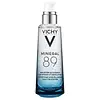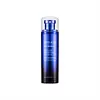What's inside
What's inside
 Key Ingredients
Key Ingredients

 Benefits
Benefits

 Concerns
Concerns

No concerns
 Ingredients Side-by-side
Ingredients Side-by-side

Water
Skin ConditioningGlycerin
HumectantCyclopentasiloxane
EmollientButylene Glycol
HumectantNiacinamide
SmoothingPEG-8
HumectantCyclohexasiloxane
EmollientCamellia Japonica Seed Oil
EmollientHydrogenated Poly(C6-14 Olefin)
EmollientPentylene Glycol
Skin ConditioningDimethicone/Vinyl Dimethicone Crosspolymer
Skin ConditioningPhenoxyethanol
PreservativeAcrylates/C10-30 Alkyl Acrylate Crosspolymer
Emulsion StabilisingAmmonium Acryloyldimethyltaurate/Vp Copolymer
PEG-60 Hydrogenated Castor Oil
EmulsifyingTromethamine
BufferingPropanediol
SolventCaprylyl Glycol
EmollientHydrogenated Lecithin
EmulsifyingPanthenol
Skin ConditioningPyrus Malus Fruit Water
MaskingParfum
MaskingEthylhexylglycerin
Skin ConditioningDisodium EDTA
Anastatica Hierochuntica Extract
AstringentBetula Platyphylla Japonica Juice
Skin ConditioningOpuntia Ficus-Indica Extract
Skin ConditioningPseudoalteromonas Ferment Extract
HumectantMyrothamnus Flabellifolia Callus Culture Extract
AntioxidantOpuntia Ficus-Indica Callus Culture Extract
AntioxidantRhizophora Mangle Callus Culture Extract
AntioxidantSalicornia Herbacea Callus Culture Extract
Emollient1,2-Hexanediol
Skin ConditioningLactobacillus Ferment
Skin ConditioningImperata Cylindrica Root Extract
Skin ConditioningGlyceryl Caprylate
EmollientOpuntia Ficus-Indica Stem Extract
Skin ConditioningAdansonia Digitata Seed Extract
Skin ConditioningAdenium Obesum Leaf Extract
Skin ConditioningPolyglutamic Acid
Skin ConditioningSodium Hyaluronate
HumectantWater, Glycerin, Cyclopentasiloxane, Butylene Glycol, Niacinamide, PEG-8, Cyclohexasiloxane, Camellia Japonica Seed Oil, Hydrogenated Poly(C6-14 Olefin), Pentylene Glycol, Dimethicone/Vinyl Dimethicone Crosspolymer, Phenoxyethanol, Acrylates/C10-30 Alkyl Acrylate Crosspolymer, Ammonium Acryloyldimethyltaurate/Vp Copolymer, PEG-60 Hydrogenated Castor Oil, Tromethamine, Propanediol, Caprylyl Glycol, Hydrogenated Lecithin, Panthenol, Pyrus Malus Fruit Water, Parfum, Ethylhexylglycerin, Disodium EDTA, Anastatica Hierochuntica Extract, Betula Platyphylla Japonica Juice, Opuntia Ficus-Indica Extract, Pseudoalteromonas Ferment Extract, Myrothamnus Flabellifolia Callus Culture Extract, Opuntia Ficus-Indica Callus Culture Extract, Rhizophora Mangle Callus Culture Extract, Salicornia Herbacea Callus Culture Extract, 1,2-Hexanediol, Lactobacillus Ferment, Imperata Cylindrica Root Extract, Glyceryl Caprylate, Opuntia Ficus-Indica Stem Extract, Adansonia Digitata Seed Extract, Adenium Obesum Leaf Extract, Polyglutamic Acid, Sodium Hyaluronate
 Reviews
Reviews

Ingredients Explained
These ingredients are found in both products.
Ingredients higher up in an ingredient list are typically present in a larger amount.
Butylene Glycol (or BG) is used within cosmetic products for a few different reasons:
Overall, Butylene Glycol is a safe and well-rounded ingredient that works well with other ingredients.
Though this ingredient works well with most skin types, some people with sensitive skin may experience a reaction such as allergic rashes, closed comedones, or itchiness.
Learn more about Butylene GlycolCaprylyl Glycol is a humectant and emollient, meaning it attracts and preserves moisture.
It is a common ingredient in many products, especially those designed to hydrate skin. The primary benefits are retaining moisture, skin softening, and promoting a healthy skin barrier.
Though Caprylyl Glycol is an alcohol derived from fatty acids, it is not the kind that can dry out skin.
This ingredient is also used as a preservative to extend the life of products. It has slight antimicrobial properties.
Learn more about Caprylyl GlycolGlycerin is already naturally found in your skin. It helps moisturize and protect your skin.
A study from 2016 found glycerin to be more effective as a humectant than AHAs and hyaluronic acid.
As a humectant, it helps the skin stay hydrated by pulling moisture to your skin. The low molecular weight of glycerin allows it to pull moisture into the deeper layers of your skin.
Hydrated skin improves your skin barrier; Your skin barrier helps protect against irritants and bacteria.
Glycerin has also been found to have antimicrobial and antiviral properties. Due to these properties, glycerin is often used in wound and burn treatments.
In cosmetics, glycerin is usually derived from plants such as soybean or palm. However, it can also be sourced from animals, such as tallow or animal fat.
This ingredient is organic, colorless, odorless, and non-toxic.
Glycerin is the name for this ingredient in American English. British English uses Glycerol/Glycerine.
Learn more about GlycerinPhenoxyethanol is a preservative that has germicide, antimicrobial, and aromatic properties. Studies show that phenoxyethanol can prevent microbial growth. By itself, it has a scent that is similar to that of a rose.
It's often used in formulations along with Caprylyl Glycol to preserve the shelf life of products.
Sodium Hyaluronate is hyaluronic acid's salt form. It is commonly derived from the sodium salt of hyaluronic acid.
Like hyaluronic acid, it is great at holding water and acts as a humectant. This makes it a great skin hydrating ingredient.
Sodium Hyaluronate is naturally occurring in our bodies and is mostly found in eye fluid and joints.
These are some other common types of Hyaluronic Acid:
Learn more about Sodium HyaluronateWater. It's the most common cosmetic ingredient of all. You'll usually see it at the top of ingredient lists, meaning that it makes up the largest part of the product.
So why is it so popular? Water most often acts as a solvent - this means that it helps dissolve other ingredients into the formulation.
You'll also recognize water as that liquid we all need to stay alive. If you see this, drink a glass of water. Stay hydrated!
Learn more about Water